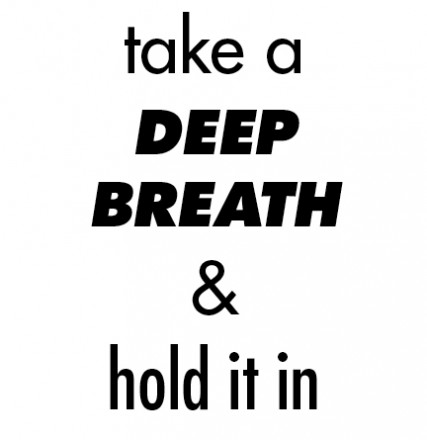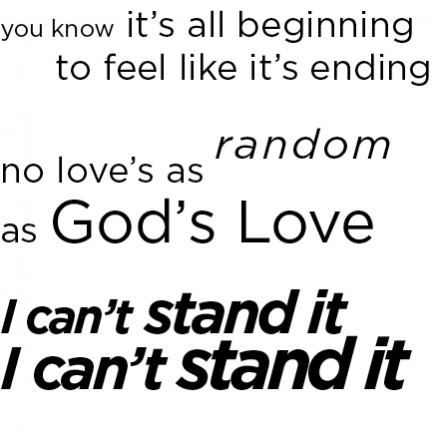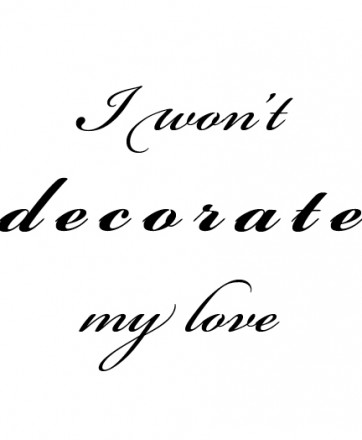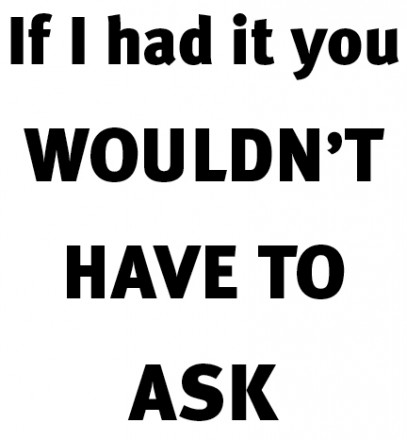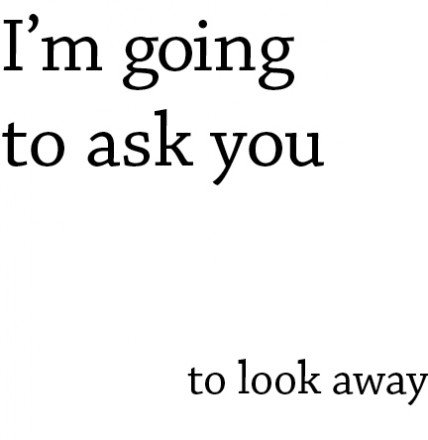The best articles on design or the design field I came across in 2011 (in alphabetical order by author):
Blessed are the Toymakers, Tom Armitage
The best toys have hidden depths. The best toys are all super-simple on the surface; super-obvious. They let you know exactly what you ought to try doing with them. But as you explore them, you discover they have hidden depths. And: hidden affordances. Spaces for imagination to rush in. Toys allow you to play games, inventing rules that make the toy more fun, not less. Toys allow you to tell the stories you imagine, not that are baked into them.
From Snarky Truth to Reasoned Explanation, Faruk AteÅŸ
You want to know how to get more women and minority members in your field of work? Stop fighting and arguing against people who are asking for more women and minority members to be recognized. It is precisely these fighting efforts ones that make those groups feel unwelcome.
Emoticomp, Ben Bashford
Interaction designers are used to using personas (research based user archetypes) to describe the types of people that will use the thing they’re designing – their background, their needs and the like but I’m not sure if we’ve ever really explored the use of personas or character documentation to describe the product themselves. What does the object want? How does it feel about it? If it can sense its location and conditions how could that affect its behaviour? This kind of thing could be incredibly powerful and would allow us to develop principles for creating the finer details of the object’s behaviour.
Requirements-Driven Software Development Must Die, Fred Beecher
Requirements-driven software development fails mainly due to communication issues. Huge spreadsheets of detailed requirements, by themselves, are simply not an effective way to convey what an interactive system needs to do and how users need it to work. What does work, however, is validating those requirements with an interactive prototype.
7 Things Michael Bierut Loves About Design, Michael Bierut via Helen Walters
Asked to create a logo for the Frank Gehry building, Bierut came up with a series of solutions that the client absolutely hated. Having presented one idea, he recalled, “they were supposed to see it and ask ‘how can we thank you?’ Instead the question was ‘is this supposed to make us feel nauseous?†In the end, the company founder Michael Tilson Thomas sent a series of his own scrawled ideas. Usually a cue for designers to feel uppity and upset that a client is trading on their toes, Bierut welcomed the input, and used it to come up with the final (gorgeous) solution.
Seven Things Designers Can Learn from Stand Up Comics, Michael Bierut
Good comedians experiment constantly. Every time they test a new joke, they risk bombing. That’s why they’ll try out new material in smaller venues, polishing pieces in front of live audiences: they need to hear what’s working and what’s not working. Seinfeld admits that when he was starting out, “I was hitting 500. I would have a good show and a bad show, a good show and a bad show.” His very first show was bad. “But success wasn’t my objective.” He was desperate to simply be on stage, and was willing to risk failure every other night to get there. Designers take risks for the same reasons. Trying something new means not being sure of the outcome. But it’s the only way that anyone working in a creative field can hope to make progress. Ambition is a strong enough antidote to fear. Louis C.K. remembers how he idolized good comics: “I wanted to be one of them, and I didn’t care if I sucked at it.”
What The Telephone’s Unbeatable Functionality Teaches Us About Innovation, Stefan Boublil
Design has become almost useless to mankind since so few people pursue single-mindedness as a foundational purpose, but would rather purposelessly chase multi-functionalism down a dark and long tunnel that may well lead to magazine covers, but to little else.
How to Lead Clever People, Karen Christiansen and Rob Goffee
You touched on the fact that unlike artists or musicians—who can thrive on their own—clevers actually need organizations to thrive. Why is that?
Typically, they need to work with other clevers in order to generate new products and knowledge. In many cases they are actually motivated by working with others who may be even cleverer than they are. We talk about Google in the book. I went to visit some of the people there at the headquarters in California. Not surprisingly, they are hiring the brightest postdoctoral students and researchers in the world; that’s who gets to work at Google. And guess what the first thing they notice when they arrive is? ‘Everyone here is cleverer than me!’ This is motivating for them, because clevers thrive when they feel surrounded by people just the same or even cleverer. That’s one of the reasons they need organizations. There are also more pragmatic reasons: they also need resources and they need organizations as a platform to achieve recognition.
Convergence 2.0 = Service + Social + Physical, Hugh Dubberly
Convergence 2.0 recognizes that interactive multimedia exist within a networked world and depend on networked services. It recognizes that most services have a social component. And it recognizes that people are rooted in the physical world and networks are increasingly connected to things. Convergence 2.0 integrates interactive multimedia with internet-based services, social networks, and the physical world.
Fundamental Design Truths, Uday Gajendar
Every design involves compromises, trade-offs, constraints : This is just a hard fact of design practice, period. You can’t get everything 100% due to the social and political complexities of…working with people 🙂 The pragmatics of any design problem require understanding of and wrestling with constraints (technical, commercial, social, etc.), negotiating various trade-offs (since no design is perfect, see above) which then forces critical debates about what is most important (prioritizing content, functionality, features, so forth) to the product & user & business. This debate is what should lead to a well-guided strategy adapted over time. The ability to artfully compromise to achieve goals for all stakeholders is at the heart of any design.
Copycats, Matt Gemmell
The issue is that real design jobs aren’t about creating something absolutely new—instead, they’re about innovation. The etymology of the word ‘innovation’ means something like “renewingâ€, or changing an existing thing by adding something new or doing something differently. Not a clean-cut, start-from-scratch scenario – that’s not what innovation is, and that’s why it’s hard.
Hand waving and the “real work” of design, Elizabeth Goodman
“Hand waving” is a pretty apt description of what interaction designers do with clients. Typically, those meetings are intended to review the course of the project and decide what to do next. These decisions are generally based on representations of the planned future system, such as wireframes, visual comps, flows, site maps, paper sketches, etc. The problem is that there’s an inevitable gap between representations of what is to be built and the experience of the finished product. This is most obvious when you think about the difference between static wireframes and interactive systems. But the problem lies deeper. If you see the goal of interaction design as supporting human goals and activities through various interactions between humans and machines, then even a clickable prototype will not match the experience of the live system. Imagine Amazon without the recommendations, or World of Warcraft without the thousands of players per server. Hand waving—ie, a combination of verbal explanations and evocative body movements—is a way to bridge that gap between intermediate representations and the experience of the built system. Hand waving supplements visual representations in order to make up for what they lack – interactivity, movement, emotionality, etc.
Minimal Viable Personality, Grimlock
PERSONALITY IS API FOR LOYALTY. NO ONE CARE WHICH BORING STRANGER IS NEXT. BUT ALWAYS WANT FRIEND NEXT.
Portable Cathedrals, Dan Hill
Each mobile phone handset is not a mere product, perhaps like the other products that have traditionally adorned the pages of this magazine—as a chair is, or a lighting fixture is. Instead, each handset is a play in a wider global contest, a node in logistics networks of immense scale and complexity, a platform for an ecosystem of applications, an exemplar of the internet of things, a window onto the daily interactions of billions of users, of their ever-changing personalities and cultures, a product that consumers traditionally consider the most important in their possession, after the keys to their home.
The phone is an intimate device, not simply through its ubiquity and connectivity, its relationship with the body. While objects have long been cultural choices and symbolic goods, the mobile phone, being the most personal connection to the internet, is a device for generating symbolic goods, a vehicle for culture, a proxy for the owner’s identities. It is vast business and cultural phenomenon, all at once.
The Robot-readable World, Matt Jones
Computer vision is a deep, dark specialism with strange opportunities and constraints. The signals that we design towards robots might be both simpler and more sophisticated than QR codes or other 2d barcodes.
How Print Design is the Future of Interaction, Mike Kruzeniski
The literal analog affordance is no longer necessary, and yet, it’s the default path that so many interactive experiences follow. We don’t need to make an eBook look like a book for people to understand how to use it. The book isn’t the cover and binding, it’s the images and the text that make the story. Similarly, a movie doesn’t need to look like a DVD on a shelf to understand that it belongs to a collection, and an audio mixer doesn’t require cables and knobs to be capable as a tool, and a Notebook does not require leather and a spiral bind to be familiar. In the early days of interaction design when software concepts were best explained through heavy handed metaphors, the familiarity of these objects and textures was appropriate. However, the rendering of artifacts has outlived its usefulness as the definitive approach to UI design. As Designers we should be critiquing it for what it often is: shallow, meaningless, and often distracting from the information it surrounds.
Checklist Thinking for UX Professionals, Greg Laugero
Key to success is public visibility of the connections among deliverables. For instance, when showing page flows, start by showing the user stories as a setup for the flows. Or if you are developing user stories, start by reminding everyone of the personas and scenarios. This ensures you have the best chance of making sure the next deliverable is as complete as possible. You also can more readily identify new scenarios, requirements, and user stories without feeling defensive, or like you missed something. If you’re doing this right, you should start to hear your clients say, “This sounds like a new user story!†when new functionality inevitably comes up.
Why Angry Birds is So Successful and Popular: a cognitive teardown of the user experience, Charles L. Mauro
What makes a user interface engaging is adding more detail to the user’s mental model at just the right time. Angry Birds’ simple interaction model is easy to learn because it allows the user to quickly develop a mental model of the game’s interaction methodology, core strategy and scoring processes. It is engaging, in fact addictive, due to the carefully scripted expansion of the user’s mental model of the strategy component and incremental increases in problem/solution methodology. These little birds are packed with clever behaviors that expand the user’s mental model at just the point when game-level complexity is increased. The process of creating simple, engaging interaction models turns out to be exceedingly complex. Most groups developing software today think expansion of the user’s mental model is for the birds. Not necessarily so.
How to Pick the Right Clients, Mike Monteiro
Over the years the one constant that we’ve been able to rely on is that how a potential client behaves in the business development process is EXACTLY how they will behave during the project. Trust your gut. If they’re slow to return your calls now, while they’re trying to engage you, they’ll be just as slow later. If gathering requirements or success metrics is hard, then gathering feedback will be just as hard, if not harder. If biz dev turns into a May Day parade of red flags then disengage. You will not be able to do good work, and neither you nor the client will be well-served.
The A-B-C of Behavior, Jodie Moule
We all seem to be talking about changing behaviour through good design…but changing behaviour is actually really hard. Working as a psychologist in a detox unit at the start of my career has admittedly shaped my view of what it takes to change someone’s behaviour; and whilst I learnt it certainly isn’t impossible, it often takes time. Combine this with the fact that most human behaviour is not considered to be overly planned, with ‘conscious thought’ playing, at best, a small role in shaping our choices…things start to become a little tricky for us as designers. So how do we start to make sense of what influences someone to change their behaviour, given we are often charged with creating designs that are ultimately intended to encourage, if not drive, some form of behaviour change?
Act First, Do the Research Later, Don Norman
Today we teach the importance of doing design research first, then going through a period of ideation, prototyping and iterative refinement. Lots of us like this method. I do. I teach it. But this makes no sense when practical reality dictates that we do otherwise. If there is never enough time to start with research, then why do we preach such an impractical method? We need to adjust our methods to reality, not to some highfalutin, elegant theory that only applies in the perfect world of academic dreams. We should develop alternative strategies for design.
Post-rationalization is An Innovator’s Best Friend, Adam Richardson
It is one thing to have the idea, quite another to understand its possibilities and implications. Some lightning bolt inspirations are indeed junk, but some of them really strike at something valuable. It’s just not always clear what that value is.
The Metaphor of The System, David Sherwin
The holy grail for any product or service designer is to be able to elegantly describe the metaphor of the system, then prove it out through usage scenarios. In some design presentations, it can take a single word or phrase to eloquently connect key moments in a system’s information architecture, interaction design, and visual design. When you encounter a system design with a compelling, unifying interaction metaphor, you can often detect that metaphor through the “iceberg tips” of wireframes, prototypes, or animatics. And when users interact with the system in testing, they often react to how those details weave together into a (hopefully) cohesive whole.
Bless The Toolmakers, Robin Sloan
So I wish more people were making tools for a specific creative purpose rather than for general consumer adoption. I wish more people were making tools that very intentionally do not scale—tools with users by the dozen. Tools you experience not through a web signup form, but through pathbreaking creative work.
I guess I want fewer aspirational Apples and more Pixar wannabes.
Creating Great Design Principles: 6 Counter-intuitive Tests, Jared Spool
Great design principles help designers learn more about their design and make critical decisions about what they’re building.
The Ten Principles of Interaction Design, Chad Vavra
To steal a metaphor from E.L. Doctorow, “[Interaction Design] is like driving a car at night. You can only see as far as the headlights, but you can still get to your destinationâ€. When a task seems too big, start by picking two things, like a page and a button. Establish their relationship and interaction. Once that is done, pick something else that relates and keep going. Everything will come together thanks to the brain’s natural ability to spatially model the world.
A Brief Rant on The Future of Interaction Design, Bret Victor
Pictures Under Glass is an interaction paradigm of permanent numbness. It’s a Novocaine drip to the wrist. It denies our hands what they do best. And yet, it’s the star player in every Vision Of The Future.
How Much Design is Too Much Design?, Khoi Vinh
If you look across the digital landscape, the most exquisitely designed user interfaces and the most comprehensively designed user experiences are rarely the most successful. On the other hand, the most successful network products make good use of design but are usually not high watermarks for design execution. Flickr and Facebook, to name two, are both very well-designed but employ only just enough in the way of intricately polished user interface elements and highly controlled layouts to succeed, and stop short of over-managing their details. Products like these are savvy enough to allow sufficient room for a user to live within them, to flex his or her muscles and breathe freely within the product’s architecture. They’re also the result of considerable iteration and improvisation, and sometimes they show that fact almost baldly in their patchwork agglomeration of mismatched features. No one would call them beautiful but they work phenomenally well and users love them.
You Are What You Eat, Trent Walton
Eat one meal, then another, and over time that stuff becomes who we are. It’s used to heal skinned knees, grow fingernails, and rebuild tired muscles. I find that thinking of work in a similar fashion can be used to one’s advantage. When a job is done, we’re left with experience, new skills, and a sharpened perception. Do work that you enjoy so you can be good at what you love.
Our Jobs in Cyberspace: Craft Vocabulary vs. Storytelling, Jeffrey Zeldman
But the longer we practice, the more intuitive our work becomes. And as it becomes more intuitive, it disconnects further and further from language and constructs.
Any other article that should be on the 2011 list? Note it in the comments!
N.B.: Either women should write more about design, or I should be reading more of their writing. Woefully under-represented on this list. Who should I be reading?
Related: See my 2010 picks
, The Cars. Like 1986 preserved in amber.
. A pure slab of 1990s BritPop.
, Blind Pilot. Not as good as their first album, but melodic and thoughtful. Music for a Sunday afternoon.
, The Antlers. If Radiohead still made rock albums, they might sound like Burst Apart.
, Sleeper Agent. This album is like the bouillon cube of indie pop music from the last 25 years. Echoes of everything from the Pixies to The White Stripes is in here.
. Soulful, singable. “Rivers and Roads” kills me every time.
, Foster The People. Leave aside the ubiquitous and overplayed “Pumped Up Kicks,” and you’ll find a record filled with hooky songs worth your time like “Houdini” and “Don’t Stop.” A party album.
, The Decemberists. The Decemberists return to form by taking an alt-country tack. Harmonica does them good.
, Yellow Ostrich. The first time I listened to this album, I was like, What are they doing? Yodeling? Throat singing? But then, wow, you get it. Distinctive sound, great hooks. I defy you to listen to “Hahahaohhoho” twice without yodeling yourself.
, Say Hi. This is the album I always knew Say Hi would make one day. Every song is a gem. Singable, memorable, alternately uplifting and heartbreaking. “Take Ya Dancin'” should have been a huge hit. A real keeper. Sad this hasn’t gotten the recognition it deserves.


